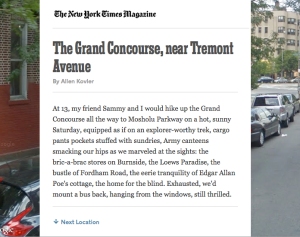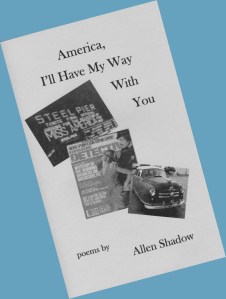Robert Frank, the master photographer who taught us to see photography and America anew, died on Monday in Inverness, Nova Scotia. He was 94.
Below, I reprise a former post on the this artistic giant:
The other day The New York Times covered the announcement of a treasure trove of images from the work of Robert Frank, one of the most influential photographers of the 20th century. The National Gallery of Art has released a comprehensive archive of Frank’s work, including contact sheets and work prints, much of it never before seen by the public. It all comes in advance of Frank’s 90th birthday, in November.
As The Times says in it’s Lens Blog:
The cover image for the U.S. edition of The Americans, Robert Frank’s epochal book, spoke volumes about the state of the nation in the mid-1950s. The tightly-cropped photo shows passengers in the windows of a New Orleans trolley assuming their place in the social order of the Jim Crow South — progressing from a black woman in the rear to white children and adults up front (slide 4).
The contact sheet that contained the image showed that Mr. Frank had photographed the city from multiple perspectives, but he ultimately selected the frame that most dramatically and symbolically captured New Orleans’ racial hierarchy. Learning this photo’s backstory would be impossible without the ability to view Mr. Frank’s contact sheet. Now, such important archival material, typically reserved for scholars and curators, is just a click away.
Born in 1924 in Zurich, Switzerland, Frank took pictures in Europe and South America during his early career, but it wasn’t until he crisscrossed the seductive roads of America that Frank felt he was finally making art with his lens. With his U.S. travels in the mid-1950s, his work reached a new level, and 83 of his road images were arranged into the book The Americans.
It’s no surprised that Jack Kerouac wrote the introduction to the first U.S. edition of The Americans. The 1959 edition raised eyebrows in the media for its brute black and white candor. But The Americans, like Kerouac’s own masterwork, On the Road, opened the door to the loneness of the country’s heart and spirit and, together, they inspired a generation of artists, musicians and thinkers.
It’s interesting how foreign image makers like Frank, Mechelangelo Antonioni (Zabriskie Point, 1970), Louis Malle (Atlantic City, 1980) are able to capture the essence of the land better than most native auteurs. In fact, with the stir made by The Americans, Frank was compared to America’s original outsider observer, Alexis de Tocqueville, whose 1835 book Democracy in America helped to define the young nation’s unique character (Is it what America brings to you or what you bring to her?).
I believe a great artist is a conduit for “place.” His subject somehow finds him, speaks through him. The artist ultimately “sees” through time as the French photographer Eugène Atget once described it. I believe such artists also see through other dimensions, some of which elude us, some of which speak through intersections of light and shadow, artifact and art, quietude and cacophony, moment and mystery.
It’s hard to describe The Americans. Language could illuminate it, could degrade it. Perhaps it’s like the stuff of dreams, the magic of which begins to disappear upon transfer to the conscious mind. So much spills from the bucket on its ascent from that deep, dark well.
I was surprised and pleased when I discovered Frank himself had linked the worlds of photography and poetry in his description of his work:
When people look at my pictures I want them to feel the way they do when they want to read a line of a poem twice.








